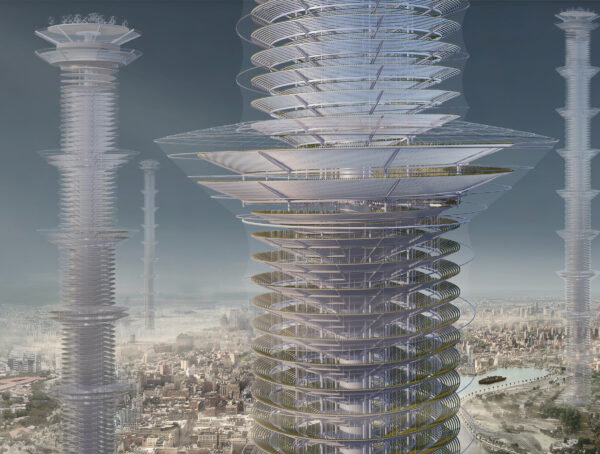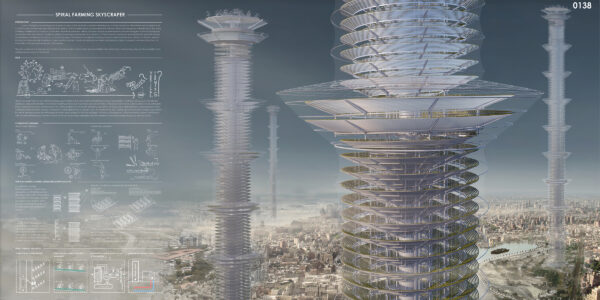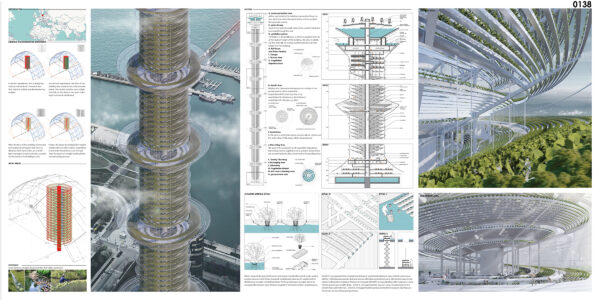Honorable Mention
2023 Skyscraper Competition
Artha Krisiantara
Indonesia
Covid 19 taught us many things and opened our eyes that conventional farming has so many drawbacks. When there was an explosion of COVID-19 cases, farmers who had adjusted their yields to match market needs became silent and watched as their orders disappeared suddenly due to the policy of limiting activities that occurred in a short time. The effect was real, millions of tonnes of produce wasted as farmers struggled to turn around quickly.
As we know, world conditions are currently increasingly apprehensive. The impact of the previous COVID-19 situation and the increasingly heated geopolitical situation between countries has an impact on tensions in the food supply chain which risks threatening the world with mass starvation at hand. In this regard, vertical farming has shown promise in helping to overcome this perhaps imminent crisis by providing decentralized farming centers, higher yields, and separation from climate effects through environmental control systems. Then the question is, how effective and ready is vertical farming to take on this big responsibility in the midst of the current energy crisis and the possibility of depleting energy sources in the future?
There is no doubt that our way of farming brings great trouble to the earth and the living things in it. land degradation, pesticide residues, pest and disease resistance, reduced biodiversity, and farmers’ health problems due to pesticide use, are just a few issues that must be addressed for a more sustainable future. Vertical hydroponic farming solves many of the problems of conventional farming operations. However, many vertical farming systems present a variety of challenges that make them always considered to supply global food on a large scale. According to the Global CEA Census Report 2021, energy consumption in vertical farming reaches 38.8 kWh/kg of product with a percentage of 55% from LED lights, 30% from cooling systems, 10% from heating systems, and 5% from others. If vertical farming becomes the method of choice for growing vegetables, then the problem of high system energy use must be solved.
PROBLEM ANALYSIS
The lighting system on vertical farms always relies on an LED lighting system. This is due to a system of floors or trays that are arranged vertically and shade each other, blocking natural light from the sun to illuminate the entire surface of the agricultural land.
currently there is a vertical farming system that is planted in vertical tube fields to maximize the use of natural light. but if it is placed on a vertical floor, of course this system will not work. The floor of the building is still the object of the problem.
It was concluded that the floor of the building functions as a field for placing vertical trays and as a circulation path for farmers in the process of transferring plants from one stage to another.
if the plants can move closer, then the building floor is no longer needed and can be replaced with a system that is friendly to sunlight.
STRATEGY
Spiral Farming Skyscraper is a vertical farming system driven by nature. This farming system replaces vertical floors which are less efficient in the growth phase with agricultural growth systems that have distances from each other and are more friendly to sunlight. In addition to being used as a medium for providing nutrition, the water flow in this system also functions as a driving force for vegetables to maximize light gain and facilitate mobility. The harvesting system is carried out at one point, using evaporative colling system and geothermal heating system.

















